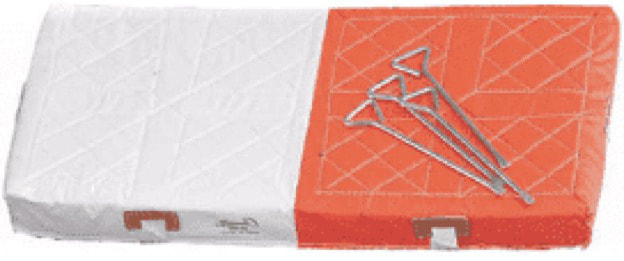For Newcomers to Senior Softball
We have collected most of the items specific to senior softball and listed them below. Many of the differences are designed to make the game safer for seniors. Given our higher reaction times and greater risk of bodily injury, the features of senior softball are designed to reduce the chance of collisions and other mishaps. The following information will be helpful to those who are still undecided about whether to join our league.
- It is strongly encouraged that pitchers use shin guards and face masks or facemask/helmet combinations. Masks for catchers and umpires are voluntary.
- WSSL has chosen softballs whose technical specifications (52/300) reduce the chance of impact injuries.
- At first base, two separate bases are used, placed side-by-side. One is for the first baseman (in fair territory) and the other (colored orange) is for the runner (in foul territory). This puts a little distance between the two players and helps avoid contact.
- Similarly, there are two plates at home. A scoring plate is added and placed eight feet from home plate, where the catcher stands to make plays. Runners head toward the scoring plate, making runner and catcher well separated during plays at home. Catchers do not tag runners coming home; instead, they receive throws at home plate similar to a force play. A commitment line is placed between home and third base. Once a runner passes that line, he is subject to the force play at home.
- A strike zone mat is placed behind home plate to help umpires decide balls and strikes. A pitched ball having the proper amount of arc will hit the strike mat after passing through the strike zone.
- Sliding is allowed only at second base and third base. Runners need to exercise caution to avoid injury.
- The defensive team will be allowed to have 10 or 11 players on the field, depending on specific division rules. In the typical configuration, 11 defensive players allow for 4 conventional outfielders plus a short fielder. Defensive substitutions can be made at any time.
- All players on the roster will bat in the designated order regardless of when they play in a defensive position.
- To keep the games moving along, batters will face a short count. Each at-bat begins with a pitch count of one ball and one strike.
- Teams are limited to 5 runs per inning, except for the last inning. Other rules to limit excessive offense might be added in the future.
- For those who find sprinting difficult, the rules allow for courtesy runners. Batters typically run to first base on their own. If a batter reaches first base safely, he may request a courtesy runner after the play is over. The courtesy runner serves as a base-running replacement for the batter until the runner scores or the inning ends.
- For players who are injured or have difficulty running to first base, division rules may allow use of a substitute runner from home. The runner begins from a position behind home plate. Substitute runners are only allowed for batters with a chronic condition who have been pre-approved by the board of directors.
The following photos help illustrate some of these senior-specific features.


